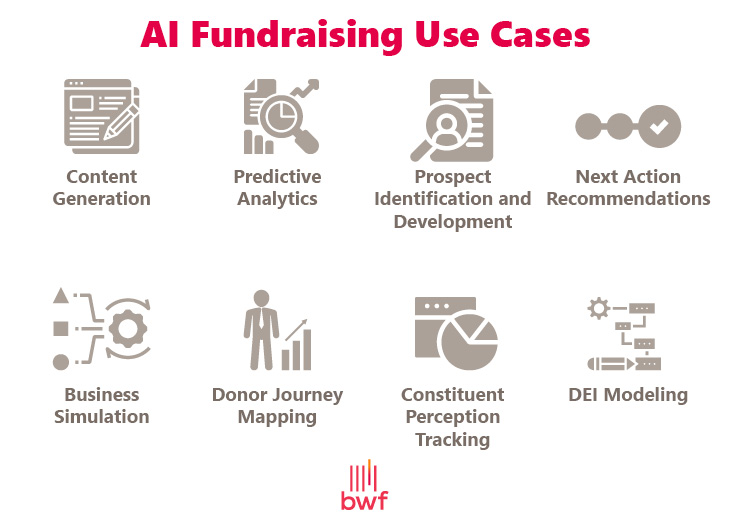Fundraising Consultant: Boost Your Nonprofit's Earnings with Expert Help
Fundraising Consultant: Boost Your Nonprofit's Earnings with Expert Help
Blog Article
The Function of Area Engagement in Nonprofit Fundraising: Structure Lasting Relationships for Sustainable Support
Community involvement is progressively recognized as an important part of effective nonprofit fundraising. The methods and strategies used to involve communities differ widely, elevating important inquiries about effectiveness and influence.
Comprehending Area Engagement
Community involvement is an essential part of successful nonprofit fundraising initiatives. It refers to the strategies and tasks that organizations utilize to connect with their neighborhood neighborhoods, fostering partnerships that are mutually advantageous. Recognizing neighborhood involvement involves identifying its multifaceted nature, that includes participation, cooperation, and outreach. Nonprofits have to identify essential stakeholders-- such as community participants, regional companies, and various other organizations-- to produce effective involvement strategies.
Efficient area involvement is based on active listening and responsiveness to the needs and passions of the community. This process includes obtaining feedback, understanding community characteristics, and making certain that the company's objective aligns with neighborhood priorities. Involving the community can take different types, consisting of public conferences, volunteer opportunities, and collaboration initiatives, each made to motivate participation and investment in the organization's objectives.
Additionally, neighborhood engagement should be come close to as a continuous discussion as opposed to a single effort. By cultivating an inclusive setting where area voices are heard and valued, nonprofits can build a solid structure for future fundraising ventures. Eventually, a deep understanding of community interaction equips companies to develop authentic connections that improve their overall effectiveness and sustainability.
Advantages of Solid Relationships
Strong connections developed through neighborhood involvement return various advantages for nonprofit fundraising initiatives. First and foremost, these partnerships foster count on and reliability, crucial components in encouraging contributors to add. When potential supporters see a nonprofit actively included in their neighborhood, they are extra most likely to count on its mission and impact.

Additionally, these connections promote efficient interaction. Nonprofits can utilize their connections to share tales of effect, updates, and needs, making certain that advocates continue to be enlightened and engaged. This open line of interaction not only strengthens bonds but likewise urges word-of-mouth promo, broadening the nonprofit's reach.
Last but not least, strong area ties can attract brand-new companions and sponsors. Individuals and organizations are much more likely to align with companies that demonstrate significant community involvement, providing added resources and support that can significantly improve fundraising abilities. Thus, cultivating durable relationships through area involvement is important to a not-for-profit's long-term fundraising success.
Techniques for Efficient Engagement
How can nonprofits efficiently engage their communities to boost fundraising initiatives? Routine updates, engaging web content, and calls-to-action can galvanize area rate of interest and involvement.
Second, organizing area occasions, such as workshops, volunteer possibilities, or fundraising drives, promotes in person interaction, allowing nonprofits to display their effect and efforts. These occasions not just elevate funds however also grow connections and permit area members to involve directly with the reason.
Third, carrying out personalized communication approaches can boost interaction. Tailoring messages to specific contributor sectors based upon rate of interests and previous payments promotes a sense of belonging and investment in the company's goal.
Lastly, creating partnerships with local businesses and area leaders can intensify outreach efforts. Collective campaigns can boost presence and reputation, showing a collective dedication to the area's wellness. By integrating these strategies, nonprofits can develop lasting partnerships that enhance fundraising initiatives and drive lasting assistance.
Measuring Interaction Success
While engaging the area is crucial for effective nonprofit fundraising, gauging the efficiency of these interaction efforts is just as crucial. Establishing clear metrics allows organizations to examine how well they are getting in touch with their target market and achieving their fundraising objectives. Trick efficiency indicators (KPIs) such as donor retention rates, volunteer engagement degrees, and interaction on social media sites systems give substantial information for evaluation.

Consistently assessing these metrics enables organizations to pivot their methods when required, guaranteeing that community interaction stays straightened with their total mission. Moreover, sharing these outcomes with stakeholders fosters transparency and constructs depend on, motivating additional neighborhood involvement. Inevitably, a robust dimension structure not only notifies future fundraising efforts however likewise enhances the connection in between the nonprofit and its advocates, preparing for sustainable success.
Situation Research Studies in Community Effect
Various study show the extensive impact that neighborhood involvement can have on not-for-profit fundraising success. One noteworthy instance is the "Something to chew on" initiative, where a regional food bank partnered with institutions and organizations to host neighborhood dinners. These events not only increased funds yet additionally promoted a feeling of belonging amongst individuals, considerably enhancing contributor retention rates.
An additional engaging instance is the "Eco-friendly Spaces Task," which entailed local residents in the revitalization of urban parks. This effort not just amassed financial backing from neighborhood businesses however likewise grew a volunteer base that added to continuous maintenance and programs. The sense of ownership and pride among area members translated into continual contributions.
In the realm of arts, the "Art for All" project successfully involved neighborhood artists and patrons to create collaborative art installations, resulting in boosted exposure and donations for a neighborhood arts not-for-profit.
These instances highlight that when nonprofits focus on area participation, they can produce long lasting connections that improve fundraising efforts, ensuring lasting assistance and promoting a vivid neighborhood culture. the original source Such cases show that neighborhood interaction is not simply a technique but a vital pillar of nonprofit success.
Conclusion
Finally, community involvement is important to the success of nonprofit fundraising efforts. By fostering solid connections with local stakeholders, organizations improve trust and reliability, leading to improved benefactor retention and loyalty. Implementing efficient engagement approaches and determining their impact makes certain that nonprofits can flourish and adjust. Inevitably, a durable foundation of area support not just magnifies fundraising possible however also grows a culture of cooperation, crucial this post for accomplishing lasting organizational objectives and sustaining purposeful impact.
Nonprofits have to identify vital stakeholders-- such as community members, regional businesses, and other companies-- to create effective interaction methods.

In final thought, community involvement is important to the success of not-for-profit fundraising initiatives.
Report this page